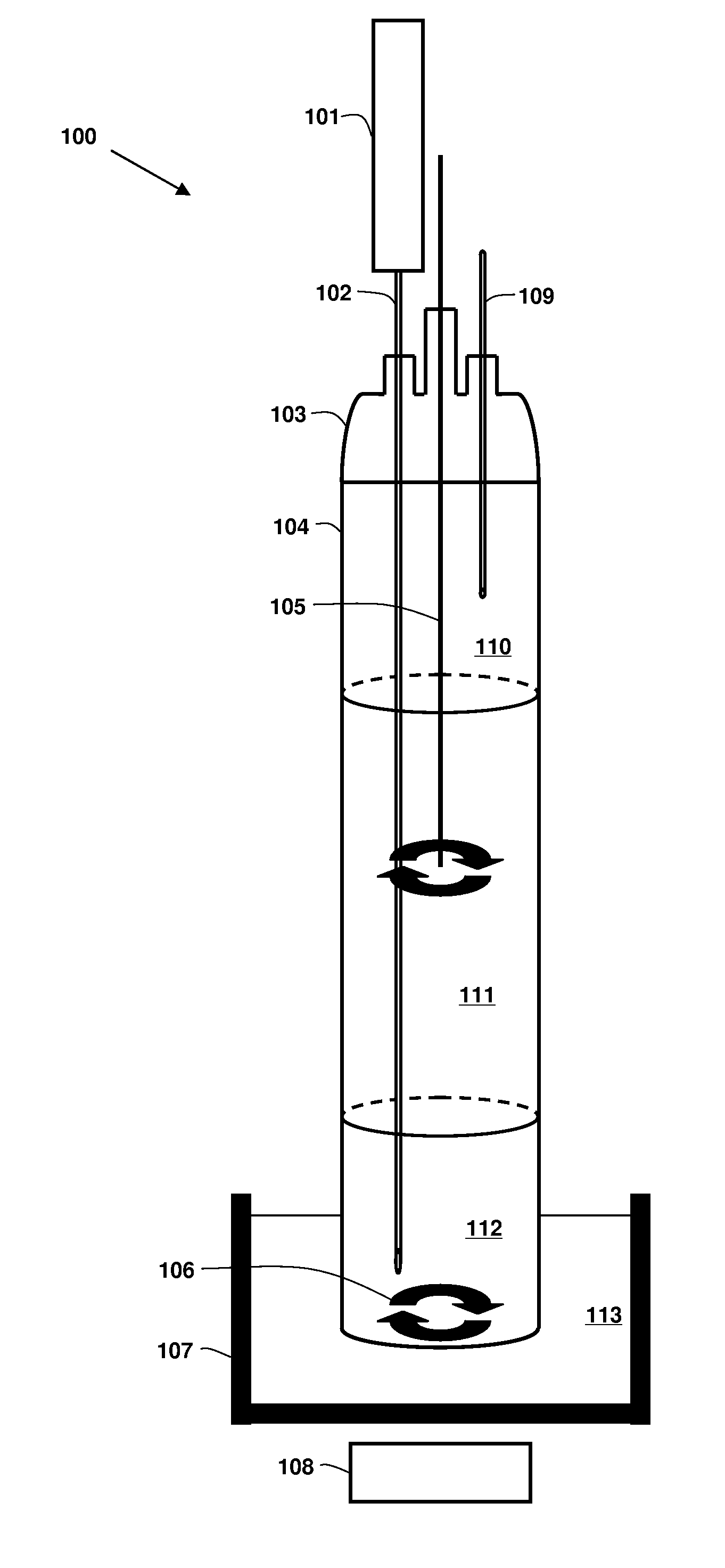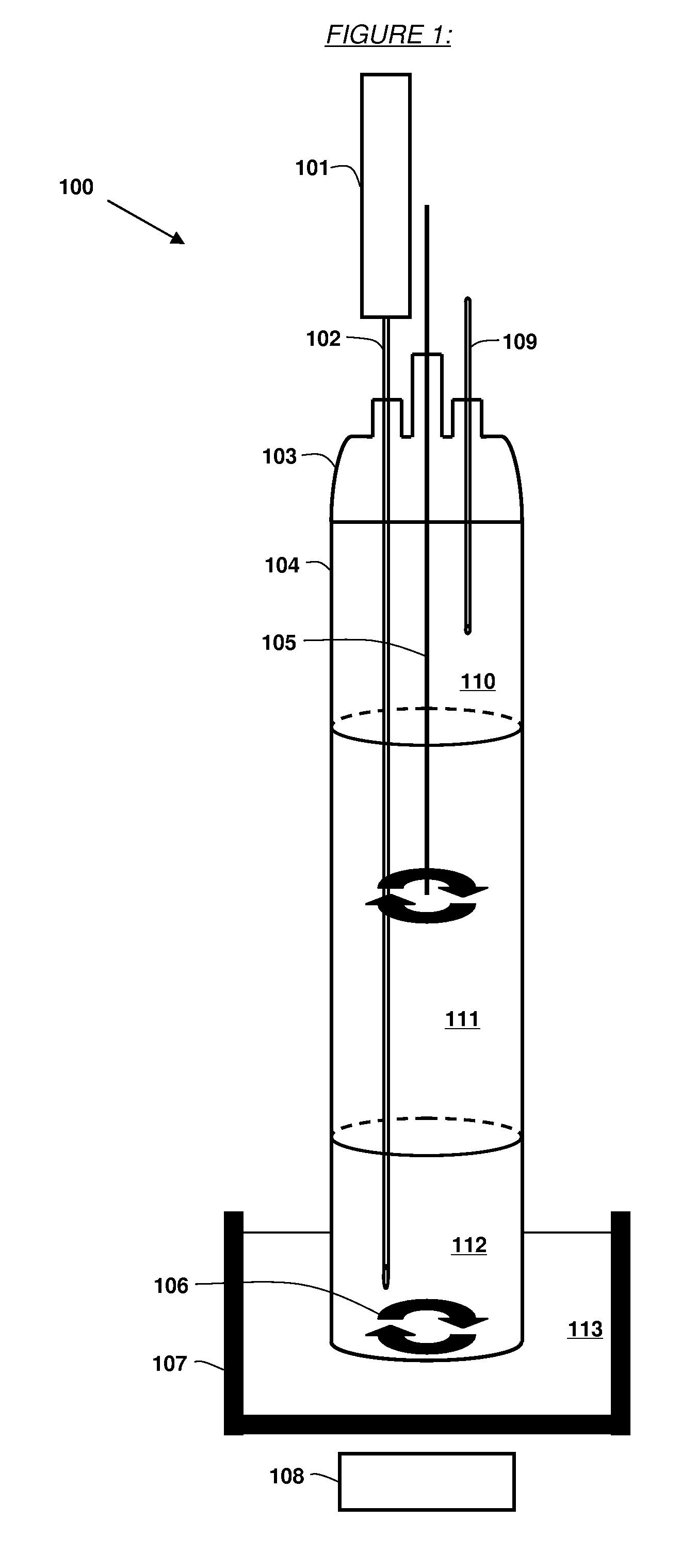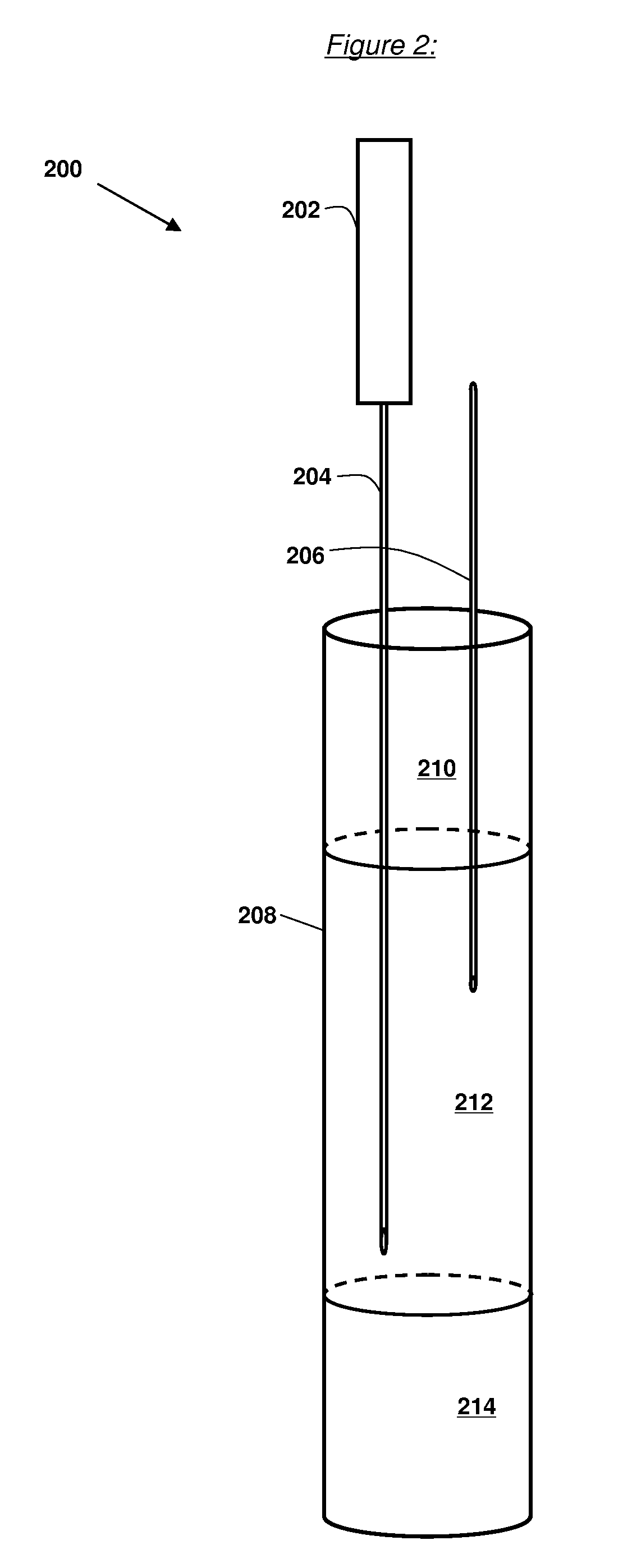Processes for dispersing substances and preparing composite materials
a technology of dispersing substances and composite materials, applied in the field of dispersing substances and preparing composite materials, can solve the problems of reducing productivity, increasing throughput time, and forming larger particles, and achieves stable dispersions, improved mixing, and high dispersion stability
- Summary
- Abstract
- Description
- Claims
- Application Information
AI Technical Summary
Benefits of technology
Problems solved by technology
Method used
Image
Examples
embodiment featuring minimal
Agitation with Larger aqueous phase
[0102]FIG. 6 provides an embodiment for a system 600 which represents a variation of system 100 and 200. System 600 can be comprised of a resin kettle 602 containing an inert gas phase 604, a continuous aqueous phase 606 and phase 608. System 600 contains a larger aqueous phase 608 as compared to the aqueous phases 111 and 212.
[0103]Multiple Phase Systems and Complex Stirring Geometries. FIGS. 5-8 illustrate systems with more than two phases or complex stiffing regimes.
[0104]Multiple phase systems. The invention need not be constrained to only two phases. FIG. 6 shows a possible three-phase system. The three phases are immiscible in each other. Components in the middle phase which are soluble in either the upper or lower phase can be extracted out. Another example would comprise an upper phase of aliphatic epoxy resin with a density lower than water, a middle phase of water, and a lower phase of epoxy resin with a density greater than water. Soluti...
embodiment featuring smaller
Resin Kettle Diameter
[0106]FIG. 7 provides an embodiment for a system 700 which represents a variation of system 100 and 200. System 700 can be comprised of a resin kettle 702 containing an inert gas phase 704, a continuous aqueous phase 706 and phase 708. The resin kettle 702 of system 700 can be narrower in diameter as compare to the resin kettles 104 and 208 which results in a smaller interface between the aqueous phase 706 and phase 708.
[0107]Suitable Apparatus for the Fabrication of Continuous Thread or Wire. FIG. 15 shows an apparatus configuration for the fabrication of long rod structures as would be useful in the manufacture of thread or wire.
Embodiment Featuring Larger Resin Kettle Diameter
[0108]FIG. 8 provides an embodiment for a system 800 which represents a variation of system 100 and 200. System 800 can be comprised of a resin kettle 802 containing an inert gas phase 804, a continuous aqueous phase 806 and phase 808. The resin kettle 802 of system 800 can be wider in d...
embodiment featuring
Larger aqueous phase with Minimal Interface
[0110]FIG. 10 provides an embodiment for a system 1000 which represents a variation of system 100 and 200. System 1000 can be comprised of a resin kettle 1002 containing an inert gas phase 1006 and a continuous aqueous phase 1008 and connected on the bottom to resin kettle 1004 which contains phase 1010.
Embodiment for a Continuous Process
[0111]FIG. 11 illustrates an embodiment of a continuous system 1100 which represents a variation of system 100 and 200. System 1100 includes conduits 1102, 1104, 1110, 1114, 1124, 1128, 1136 and 1140; resin kettles 1106, 1116, 1130 and 1143; and valves 1112, 1126 and 1138. Conduit 1102 provides an solution drip into resin kettle 1106. Conduit 1104 provides a solvent drip in resin kettle 1102. Resin kettle includes an phase 1108 (e.g., comprising a mixture of epoxy and solvent). Suitable solvents can be an compound, a particularly preferred solvent being dimethyl formamide (DMF). The phase 1108 drains into c...
PUM
| Property | Measurement | Unit |
|---|---|---|
| frequency | aaaaa | aaaaa |
| diameter | aaaaa | aaaaa |
| volume | aaaaa | aaaaa |
Abstract
Description
Claims
Application Information
 Login to View More
Login to View More - R&D
- Intellectual Property
- Life Sciences
- Materials
- Tech Scout
- Unparalleled Data Quality
- Higher Quality Content
- 60% Fewer Hallucinations
Browse by: Latest US Patents, China's latest patents, Technical Efficacy Thesaurus, Application Domain, Technology Topic, Popular Technical Reports.
© 2025 PatSnap. All rights reserved.Legal|Privacy policy|Modern Slavery Act Transparency Statement|Sitemap|About US| Contact US: help@patsnap.com



